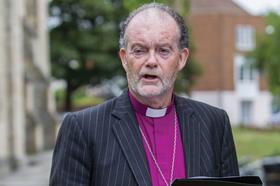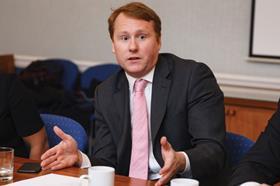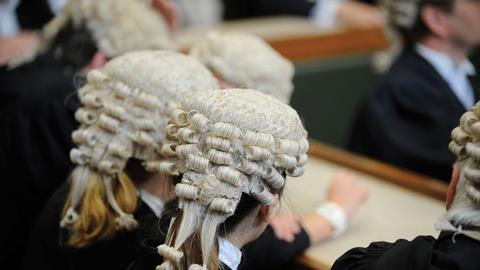The low down
Opportunities to practise oral advocacy are limited and falling, and the apparent response of the bar is to lobby for protection of its members, under the cloak of ‘concerns’ about the quality of solicitor-advocates. Legal regulators, ordinarily keen on liberalisation, seem happy to go along with proposed restrictions, despite the fact such concerns are poorly evidenced. There has been a robust response from solicitor-advocates, who have called out the ‘whispering campaign’. It is, solicitors insist, just one more way that the bar and the judiciary are failing to support diversity. Meanwhile, the record for solicitor QC appointments in one year is six silks, and this year it fell to four out of 108. But in-depth knowledge of a case means that clients see an advantage in sticking with their solicitor when cases move to higher courts.
There are over 7,000 solicitors with a higher rights of audience (HRA) qualification, against 16,600 practising barristers, a significant proportion of the advocacy market. Yet Adam Tear, chair of the Solicitors’ Association of Higher Courts Advocates (SAHCA), says: ‘In terms of advocates, we represent a large chunk of them, but we are wholly unreflected in anything else.’ This includes in appointments to panels, Queen’s Counsel and the senior judiciary.
Reinforcing the view that there is a glass ceiling for solicitor-advocates was the decision by the Solicitors Regulatory Authority to launch a 12-week consultation ‘to make sure that high standards of advocacy are provided by solicitors’. This closed on 13 November.
The SRA wants to reform the assessment of solicitor-advocates and has proposed that only solicitors with the HRA qualification act as advocates in the more serious youth court cases, among other measures.
The SRA appears focused on listening to what the bar has to say about advocacy, rather than coming to our members
Adam Tear, SAHCA
Tear says: ‘The bar has banged the drum, saying advocacy standards are poor. What they haven’t been doing directly but appear to be doing via the back door, is a whispering campaign that it is solicitor-advocates… The SRA appears focused on listening to what the bar has to say about advocacy, rather than coming to our members.’
The ‘evidence used to justify it doesn’t stand up to scrutiny’, argues Tear. SAHCA has contacted the Legal Ombudsman, but it does not discriminate between complaints about advocacy in that way; and there has only been a small number of reports to the regulator. From 1 January 2015 to 28 February 2018, the SRA received 89 complaints from judges and the courts about solicitors and firms working in advocacy. Only 3% related to solicitor competence.
Yet in the consultation, the SRA said: ‘Persistent concerns have been raised about the standard of solicitors’ advocacy. These have focused on criminal advocacy… [and] on practice in the higher courts.’

These include Bishop James Jones’ report into Hillsborough litigation, and Dame Elish Angiolini’s report into deaths and serious injuries in police custody. Both criticised ‘overly aggressive and adversarial advocacy in coroners’ courts and inquiries’. But, Tear says: ‘The vast majority of advocates before inquiries are barristers… so to use that as evidence why solicitor-advocates should be dealt with and have their training changed seems illogical.’
The SRA also cited the Jeffrey Review, commissioned by the Ministry of Justice in 2013. It found ‘a level of disquiet’ about criminal advocacy standards among judges. It also highlighted ‘the disparity in mandatory training’ between barristers and solicitor-advocates and raised concerns about solicitors in smaller practices retaining work beyond their expertise.
The youth court is an excellent training ground for those solicitors who wish to obtain higher rights
Andrew Morris, ITN Solicitors
But in his report, Jeffrey also acknowledged that ‘there is undeniably an element of inter-professional rivalry at play’. He also recognised that ‘there is genuinely no empirical evidence on which to base a confident assessment’.
Among other evidence gathered by the SRA was the 2016 Taylor Review of the youth court system. This recommended that training should be mandatory for legal professionals in the youth courts.
The regulator also referenced its own research: a 2018 study jointly commissioned with the Bar Standards Board, based on interviews with 50 judges that found ‘judges tended to think that the quality of advocacy had declined over time’; and a recent thematic review of 40 law firms practising criminal advocacy found that practitioners relied ‘heavily’ on their PQEs to measure competence and to justify undertaking little ongoing professional development.
Like Jeffrey, the SRA could not make a robust case that solicitor-advocates’ work was of insufficient quality. Nevertheless, the regulator said that there was ‘justification for taking action to improve our approach to promoting high standards’.
The most controversial proposal is for youth solicitors to hold a criminal HRA qualification where they are acting as advocates in any case that would go to the Crown court if it involved an adult. The youth court is a specialist magistrates’ court that deals with trials of children aged 10-17, except for serious cases such as manslaughter, murder and rape.
At the moment, solicitors do not need a criminal HRA qualification to act as advocates in the youth courts. But the SRA said that the 40% of the youth court solicitors who already have this qualification would not need to sit the revised test.
Speaking about the other 60%, Will Richmond-Coggan, a solicitor-advocate at Freeths and SAHCA past chair, says: ‘There are extremely capable solicitors practising in the youth courts who have never needed to attain higher rights.’
Tear says that solicitors who have been practising in the youth courts for ‘20 or so years, doing this work day in, day out’ will have to ‘instruct a pupil to come and sit in front of them, and literally be a mouthpiece’.
Andrew Bishop, managing director of Bishop and Light Solicitors and a Crown court advocate, says: ‘This seems to be led by the bar in an attempt to obtain more work at a time when Crown court cases are diminishing in number. The SRA should reject it and trust solicitors.’
The SRA is also failing ‘to grasp that solicitors are well aware of their duties towards the court and their clients, and if a particularly complex, usually sexual, case is to be tried in the youth court and the solicitor does not feel it is within their competence, they will instruct an HRA or counsel’, according to Bishop.

Andrew Morris, a criminal solicitor-advocate at ITN Solicitors, says that not only has the youth court ‘always been the domain of specialist solicitors’, but it is also ‘an excellent training ground for those solicitors who wish to obtain higher rights’.
The SRA’s other key proposals are: to introduce revised standards for the HRA assessments; a ‘single, standardised test’, similar to the Solicitors Qualifying Exam (SQE), run by ‘a single assessment organisation’ instead of the range of providers today.
The regulator is also keen that the HRA test is attempted post-admission to ‘help establish external confidence in the qualification as a higher qualification’. Currently, aspiring solicitors take this assessment as an elective on the Professional Skills Course before they have been admitted, but the PSC will be phased out with the advent of the SQE.
QASA culled
In its consultation, the SRA put the last nail in the coffin of the Quality Assurance Scheme for Advocates, developed (but never implemented) with the Bar Standards Board and CILEX Regulation.
QASA was an accreditation scheme for ensuring the quality of all criminal advocates in the higher courts. It was originally proposed in May 2013. A legal challenge from barristers claiming the scheme was unlawful was eventually dismissed by the Supreme Court in 2015.
The SRA said it ‘will be applying to the Legal Services Board to remove the QASA regulations’ as it ‘no longer considers [the scheme] fit for purpose or in line with our current regulatory approach.’
‘We welcome the decision that QASA is not the way ahead,’ a Law Society spokesperson told the Gazette. ‘Whatever the pros and cons around it, the uncertainty has been unhelpful, and it is good to see it brought to an end.’
For Morris, the proposal not to allow solicitors to take the HRA exam until they have qualified is puzzling: ‘I cannot personally see the practical difference between obtaining higher rights one day after qualification and during the two-year training period… Pupil barristers can appear in the Crown court after six months of pupillage.
‘This change will add an extra unnecessary expense to legal aid practices already facing a shrinking legal aid budget.’ Taking the HRA exam after admission could add around £1,500 per employee, legal professionals estimate.
SAHCA suggests ‘a longer period post-admission’ before the HRA assessment is attempted, but argues that a single provider would ‘only increase the costs of assessments’.
The SRA does not just want to make changes to assessments, but also enhance ‘continuing competence’ of solicitors practising civil and criminal advocacy with online ‘tool kits’.
The SRA is recognising that ‘more can be done to ensure that all solicitor-advocates receive a thorough grounding in advocacy skills’, says Richmond-Coggan. ‘It is also good to see that the proposals contemplate continuing support after advocates obtain those higher rights. At present, only SAHCA provides anything like a structured continuing programme of advocacy training for qualified solicitor-advocates.’
One skills gap is oral advocacy in the higher courts. This is caused by limited opportunities to learn through experience. ‘Magistrates’ court advocacy is our bread and butter and a great place to develop,’ Bishop says. ‘Where improvement is needed is in the transition to Crown court advocacy.’
But there are ‘fewer opportunities’ for advocates due to the reduction in the number of cases that have been charged and progress through the criminal courts.
One in three solicitor firms offers criminal advocacy, mostly focusing on sentencing and guilty-plea hearings, while 60% of firms provide advocacy services for civil cases (47% in family law and 45% at tribunals). But SRA research found firms are ‘reluctant to provide learning opportunities’ and a ‘tendency to instruct barristers’.
‘In our litigation group all the associates are encouraged to [obtain] their higher rights and become solicitor-advocates because it makes them better litigation lawyers,’ says Mark Levy QC, a partner at magic circle firm Allen & Overy. But he adds that ‘none of them ever does any advocacy because it is not part of the job’. This reflects SRA findings that a quarter (26%) of solicitors in private practice have never used their HRA qualification in the higher courts.
Levy questions why his litigation colleagues are ‘quite so reticent to do any oral advocacy and why they subcontract all of that to the bar because they could do it. It’s just a question of experience’. But he also observes that ‘our types of clients expect the barristers to turn up at court’.
Levy, who is co-head of the firm’s international arbitration group, says it is ‘a challenge for us to make sure that junior lawyers get enough exposure to oral advocacy and it’s not all hogged by the partner’, contrasting this approach with that of the opposing US firms in arbitration proceedings. ‘They will give a small witness to one of the junior lawyers just to cut their teeth and give them flying hours.’
Tear, who specialises in public law and civil law disputes, is encouraging SAHCA’s members to hone their skills in ‘Court 37’ (the interim applications court of the Queen’s Bench Division of the High Court). Although that is pro bono, Tear observes that he has ‘picked up cases off the back of it’.
Solicitor-advocates on panels is a key issue for SAHCA. ‘If you want a more reflective society, instruct solicitor-advocates who come from a more diverse background,’ Tear argues.
Tear says there has been ‘positive engagement’ from the Home Office on this issue. There have also been ‘positive’ discussions with the Law Society, which recently asked SAHCA to provide a ‘list’ of member solicitor-advocates who are able to assist the Society with its litigation needs.
With other stakeholders, there has been little or no dialogue. ‘The SRA just don’t engage with us on that issue,’ says Tear. ‘The Equality and Human Rights Commission (EHRC) advertised their panel earlier this year but didn’t alert us to the fact that this was happening.’
The EHRC only recruited from the bar for its 174-strong panel of counsel for England and Wales, though it did encourage solicitor-advocates to apply to join its panel of counsel by the deadline of 24 January 2019, for example, through social media.
The other two key issues for SAHCA are the elevation to silk and the judiciary, and they are interconnected.
The Law Society, which monitors the figures, says that it is ‘concerned that fewer than a third of the total judiciary [courts and tribunals examined jointly] are solicitors and the number of solicitor judges drops the higher we go on the bench’.
Solicitor judges account for 6% of recorders; 13% of circuit judges; 8% of deputy High Court judges; 4% of High Court judges; and 3% of Court of Appeal justices. However, almost three-quarters of district judges (72%) were from a solicitor background in 2018/19, ‘so this may be a feeder for more senior roles’, a Society spokesperson says.
Linked to this is the tiny number of solicitor-advocates making it to silk. Tear says: ‘Unfortunately, we are in that catch-22. If you are not a QC you are unlikely to make it into the senior ranks of the judiciary.’
There were only four solicitor-advocates among the 108 lawyers made QC in March, the second year in a row in which the number of solicitors awarded silk has fallen, albeit from a very low base (five in 2018 and a ‘record’ six the year before). The four solicitor-silks (all men) are from City firms, where they practise international arbitration.
One was Stephen Fietta QC, the founder and principal of public international law firm Fietta LLP. He says: ‘The perennial obstacle is the lack of substantive oral advocacy opportunities for solicitors, except for those involved in arbitration work… where rights of audience and court experience are not relevant.’
Levy, who was in the same round of appointments, says that in the leading international arbitration solicitor practices ‘we tend to do our own advocacy’. Hence why ‘it is only in that field that there are likely to be solicitors who have done enough oral advocacy to be able to meet the criteria set out in the QC application’. This includes a list of the 12 most important cases in which the applicant appeared as advocate in the previous three years, and that can include arbitrations. Referees can be both judges and arbitrators.
‘Another challenge is the ability of solicitors to identify the dozen or so judicial referees typically required to vouch for advocacy skills,’ according to Fietta. ‘Thankfully, many of the arbitrators before whom I have appeared have senior judicial experience or are themselves QCs, which probably made their references more meaningful.’
The Society is developing a new programme, due to launch in 2020, to help solicitors develop the skills and expertise they need to become a QC.
The barrister-solicitor dichotomy remains alien to most of the British public and this is potentially a challenge for the SRA aim to boost access to legal services. It is also a challenge (and an opportunity) for solicitor firms offering a ‘cradle to the grave’ service.
‘Before I had higher rights I was often asked: “Why can’t you do my case in the Crown court?”’ says Bishop.
Despite the negative genesis of the SRA’s proposals on solicitor-advocates, Richmond-Coggan’s wish is that they will have a positive impact: ‘I hope that these reforms will enhance the reputation of solicitor-advocacy and encourage more qualifying lawyers to consider that as a legitimate alternative to the traditional advocacy career path of going to the self-employed bar.’

Marialuisa Taddia is a freelance journalist
































No comments yet